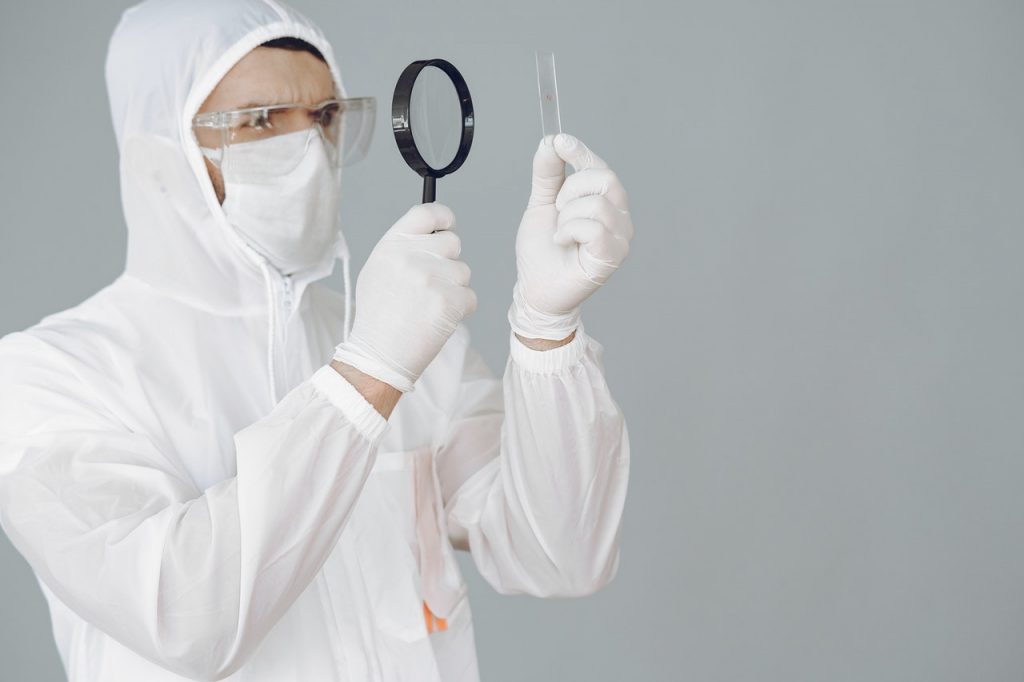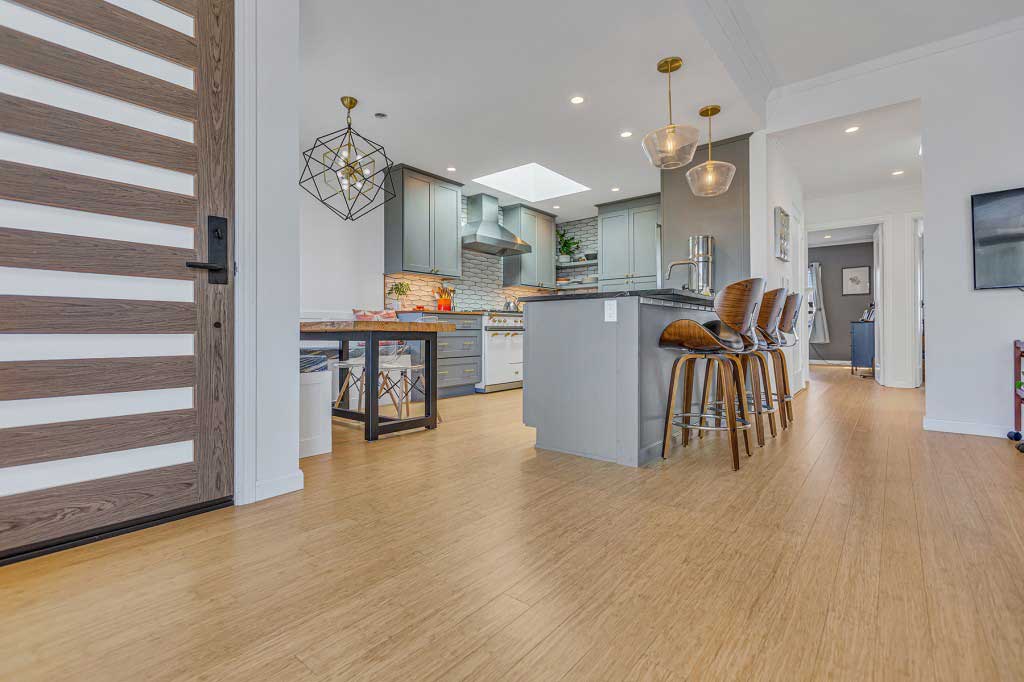These days everyone is focused on being healthier. We’re spending much more time at home, so it only makes sense you want a healthier home. Did you know that replacing carpets with hard flooring is one of the best ways to improve the health of your home?
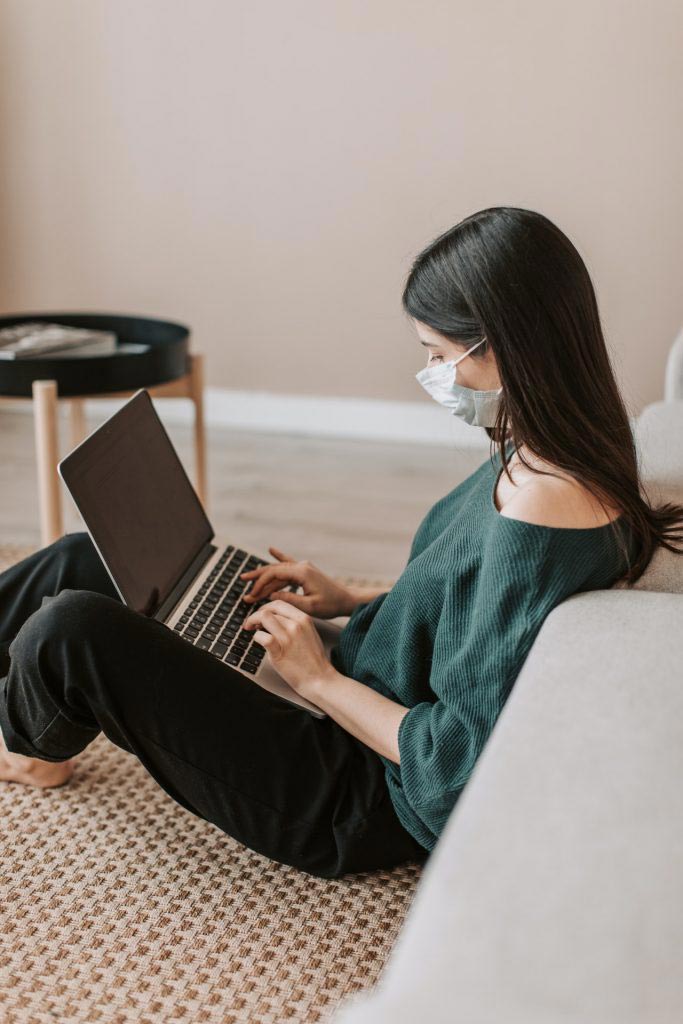 Carpet traps food, allergens, dust mites, and more
Carpet traps food, allergens, dust mites, and more
No offense to the carpets or rugs in your home right now, but they are like self-contained trash bins. Carpets are like magnets. They collect everything.
Remember those chips you ate while binging Netflix last Friday? They’re on the carpet.
Wasn’t it so much fun picking apples last fall? The dirt particles you carried home from the orchard are still on your carpet. The dirt lasts longer in the carpet than the apples.
But you can’t really blame the carpet for being gross. You’re the one that brings everything into your house. The carpet just catches it. And holds on tight.
The problem with carpet
See, carpet is made from fibers. And the carpet is installed over padding which is made up of – you guessed it – more fibers.
Fibers grab onto everything and hold tight. It’s really hard to get anything loose from fibers.
Sure, you can work at it. You can apply high powered suction (otherwise called a vacuum) and treat them with sprays (like foam carpet cleaners), but you really aren’t getting things loose.
At most you’re just tossing particles back up into the air before touch back down on the carpet.
What’s in your carpet?
If you could inspect your carpet with a microscope you would find so many disgusting things. Carpets hold:
- Food crumbs
- Pet hair
- Bacteria
- Pollen
- Shed skin cells
- Soil
- Insect parts
- Dust mites (more on these later)
- Mold
- Threads, lint, and fibers from clothing
It’s a virtual smorgasbord of revolting things. You can’t have something that disgusting on your floors and hope to have a healthy home.
That’s because most of the disgusting things that carpets collect are allergens.
Carpets and dust mites
Carpets provide cover and a safe haven for many allergens. But the most nefarious of them all is the tiny, invisible dust mite.
That’s right, the most potent allergen particle in your home is too small to be seen with the naked eye.
Behold the dust mite. Dermatophagoides farina.
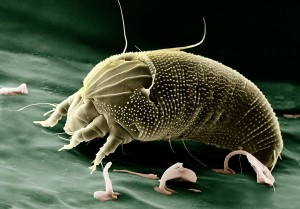
This microscopic cousin to the spider and distant relative of the crab is the most common household allergen in the United States.
They live on a diet of human skin cells. The same skin cells you shed all day every day. The ones that collect in your carpet.
The problem with dust mites
Dust mites eat human skin and poop. It’s a tough job but someone has to do it. People shed skin constantly, so dust mites are like the skin clean-up crew.
Except for their poop and their bodies contain a protein the medical guys call Der f 1. When people breathe this protein it causes an allergic reaction. The top 5 ways you know you have dust mite allergy are:
#1 Sneezing
#2 Wheezing
#3 Coughing
#4 Watery eyes
#5 Rash
Many times, these symptoms will show up when you first wake up in the morning or right after you clean the house.
Every move you make stirs up a microscopic cloud of allergens from your carpet. There’s nothing you can do about it except removing the carpet and replace it with hard flooring
Carpets and Fleas
Dust mites aren’t the only critters loving the shelter of carpet. If you’ve ever battled fleas, you know the problem with carpet.
Fleas really prefer to live on their host. That’s where the food is! But that doesn’t mean that fleas won’t end up on the carpet.
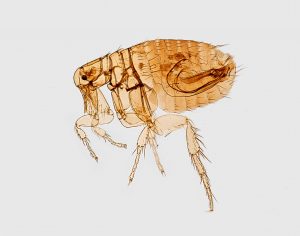
That’s because fleas can lay up to 50 eggs on their host. These eggs aren’t very sticky, so it’s easy for them to fall off the host and land on the carpet.
Flea eggs hatch in the carpet and the larvae hang out. They feed on what’s dropped from adult fleas on the host or on the carpet and then pupate. While they are pupating, you may think you’ve got the fleas under control. Think again, when they hatch, they are jumping and biting again. That’s not healthy.
Carpets and VOCs
Even with natural fiber carpets, it still takes quite a few chemicals to fix the dyes and bind the pile with adhesives. Polyester and nylon are the most common synthetic fibers. Have you ever seen a polyester plant? It looks something like this. There’s nothing natural about it.
When the carpet is first installed, it blasts these VOCs into the air. That’s what you call that “new carpet smell” and the process is called off-gassing.
Even when the smell subsides, the carpet continues to release these chemicals into the air. Because they are airborne, they are easy for you to inhale.
The National Institutes of Health recommends you remove or reduce the number of VOC off-gassing materials in your home for the best indoor air quality.
Hard flooring is much healthier
Hard flooring is so much better for your health. It’s not gross. It doesn’t collect all those particles. Sure, carpet comes in many different colors and textures, but hard surface floors provide a world of options.
Hard flooring doesn’t collect allergens
Because hard floors provide a smooth surface facing the room, they don’t have fibers extending like arms to grab particles and draw them in. Hard flooring doesn’t scrape particles off the bottom of your shoes or feet the way carpet fibers do.
Dust mites despise hard floors
Carpets provide warmth, humidity, darkness, and food. It’s everything a dust mite could ask for in an ideal environment. Hard flooring is just the opposite. Dust mites despise hard flooring. There’s no literally any place for them to hide.
Most hard flooring doesn’t off-gas
Most hard flooring is made with natural materials. Ceramic and porcelain come from clay. Marble, slate, and granite come from stone. Wood and bamboo come from plants. Compare this bamboo plant with the polyester plant.
Some hard surface floors can use toxic adhesives, but many hard floor manufacturers submit their products for toxicity evaluation and their FloorScore rating proves they don’t pollute the indoor environment.
Cleaning Carpet versus Cleaning Hard Floors
The truth is you really can’t clean the carpet. Now, you can hire a company to clean your carpet, but just because you pay for carpet cleaning doesn’t mean your carpets are really clean.
Imagine taking your beloved blanket and throwing it on the floor. Now spray it with some soapy water and then vacuum the water up with a shop vac. Do you think that blanket would be clean?
Carpet cleaning is basically the same process. The cleaner injects chemical solvents or soaps into the carpet and then extracts them.
What happens when padding gets wet
Too often, the pad gets wet along with the carpet. If that happens, you’ve got real problems. While it might take hours for the carpet to dry after cleaning, it can take carpet padding days or weeks to dry if it gets wet.
When the padding gets wet it is usually because the cleaning tech used too much solution, or they didn’t have extraction equipment with enough suction to draw the solution back out.
Either way, moisture left in the padding along with the dirt that wasn’t removed is the perfect environment for mold growth. And mold growing in your home isn’t conducive to a healthy environment.
Cleaning a hard surface floor
But when you clean a hard surface floor, you actually get the surface clean. It doesn’t matter if you sweep, vacuum, steam, dust, or wet mop that floor, you remove the soil. Just be careful. You don’t want to end up like these guys:
Cleaning a hard surface floor doesn’t penetrate the surface either. Tile may be on backer board and wood or bamboo may be on a padded underlay but neither one will get wet from cleaning the hard surface above.
So, when you clean a hard surface floor, it’s really clean and the cleaning process doesn’t promote mold growth. Clean is a healthier environment and that’s the goal.
Hard Surface Floors are Healthier for the Environment Too
Remember the chemicals that go into making carpet? Most of them start with petroleum. And that comes from fossil fuels. Now there is some controversy about whether the amount of fossil fuel on Earth is fixed or if the Earth constantly makes fossil fuels.
Either way, extracting the fuel, processing it into the chemicals, then making the fibers and making the carpet consumes intense amounts of energy. These processes also create toxins that are released into the air.
Hard surface floors are more environmentally friendly. Ceramic and porcelain are low tech materials. Bamboo can grow a foot a day or more.
When you install hard surface floors throughout your home, you are lessening your carbon footprint and your impact on the environment. That’s better for everyone’s health.
The Experts Agree
There’s very little you can get experts from varying disciplines to agree upon. Well, okay most will agree that smoking is bad. But aside from that, there is little else. Except you will find that when it comes to creating a healthier home, they do agree that hard surface floors are better.
National Institutes of Health
The NIH is the US government’s official arm dedicated to public health research. They recommend you avoid carpeting and clean floors once a week if you have allergies. They also stress the importance of washing your bedding in hot water weekly to keep those awful dust mites in check.
American Academy of Allergy, Asthma, and Immunology
AAAAI takes it a step further. This is an association of medical doctors that specialize in people with respiratory conditions like asthma and allergies. They look for ways to help patients reduce their exposure to unhealthy agents and recommend that carpeting be removed as much as possible.
Environmental Protection Agency
The EPA is another governmental agency that concerns itself with the environment in general. They look at the outdoor and indoor environments. And when they look indoors, the EPA recognizes that carpet and other fiber surfaces collect and create dust. That’s why they identify carpet as a negative factor impacting indoor air quality.
Hard Surface Floors Improve Financial Health Too
Of course, you have to consider the cost of buying and maintaining any improvement to your home. Here’s another area where hard surface floors are healthier. They improve the health of your wallet.
Hard surface floors last longer
Depending on the quality of the carpet, you can expect to get anywhere from 5 to 10 years of useful life. During that time you’ll need to treat for stains and have it professionally cleaned about twice a year.
Ceramic, porcelain, and stone tiles can last 20 years or more. During that time, you’ll probably have the grout scrubbed and resealed about every 5 years.
Laminate floors will last about 15 years. That’s just a bit longer than carpet, but those will be healthier years for sure.
Wood floors will last almost forever. However, you will need to sand and refinish them. Not a small job. Wood is expensive, but it is long-lasting.
Strand woven bamboo floors last much longer than traditional hardwoods, due to their density, as they rarely if ever need to be refinished in residential installations (however they can be sanded and finished again as well).
Hard surface floors require less maintenance
Hard flooring saves on professional maintenance costs as well. You don’t need to professionally clean hard surface floors on a regular basis. You may need to strip and wax terrazzo, polish marble, or have the grout cleaned on ceramic or porcelain tiles but that’s about it.
Hard surface floors require little maintenance other than weekly cleaning.
Top Ways Hard Floors Are Healthier than Carpet
In the carpet versus hard floors deathmatch, hard floors are the clear winner for better health.
#1 Hard surfaces don’t collect the debris from day-to-day living as much as carpet
#2 Hard Surfaces are better for allergies and asthma – no place for dust mites to hide
#3 Hard surfaces floors don’t harbor fleas, flea eggs, larvae, or pupae
#4 Hard surface floors are easier to clean, and you can really get them clean. Not just pretend to clean them.
#5 You get lower exposure to VOCs, especially if you pick a hard surface floor with a great FloorScore rating.
#6 Hard surface floors are better for the environment. You make the world healthier when you lower your carbon footprint.
#7 Hard surface floors cost less to maintain. Other than routine cleaning, there’s not much maintenance involved with hard floors.
#8 Over time, hard floor surfaces are healthier for your financial situation. See #7 above, they don’t cost much to maintain.
#9 Experts from the government and medicine agree hard surface floors are better for the environment.
#10 No dust mites!
So if you’re looking for a healthier indoor environment, look no further than hard surface floors.

About the Author
Cheryl is our go-to guru for all things sustainable living. She’s on a mission to make your family and our planet thrive! With a heart as big as her passion for sustainability, Cheryl brings you the freshest insights on eco-friendly building products and energy efficiency. 🌱💡
And hey, did you hear about the eco-friendly lightbulb that went to therapy? It finally found its inner “enlightenment”! 😄 Join Cheryl on this green journey, where she’ll tackle your concerns with a smile and a sprinkle of eco-humor!




